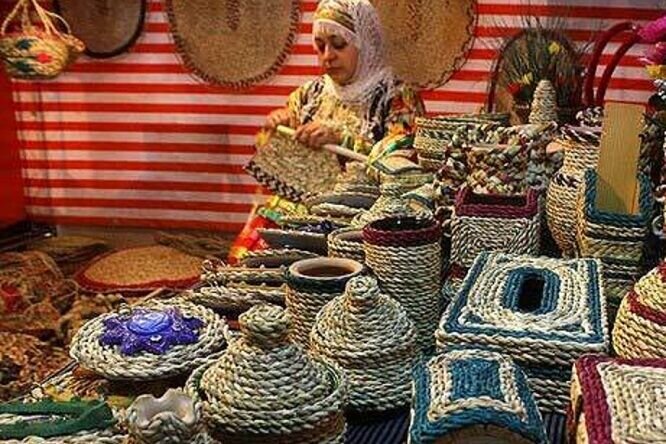Over 2m Iranians engaged in handicraft sector, deputy minister says

TEHRAN – The deputy minister of Cultural Heritage, Handicrafts, and Tourism has said more than two million Iranians are directly or indirectly engaged in the handicraft sector.
“More than two million people work directly or indirectly in the field of handicrafts, which is linked with production, employment, and entrepreneurship,” Pouya Mahmoudian said on Thursday.
Currently, 299 fields of handicrafts are practiced across the country, she said.
Mahmoudian made the remarks during a visit to Kerman, adding “Iran is one of the top three countries in the world in terms of production and diversity of handicrafts…”
When it comes to handicrafts, the high capacity of the sector, diversity of ethnic groups whose skills have been passed down from generation to generation, and in particular the role of women is significant, she mentioned.
“Handicraft production is the only source of income in some villages of Kerman province.”
Baloch embroidery, hand-woven kilim carpets, wicker works, pateh, and precious and semi-precious gemstones are among handicrafts being produced in Kerman, which is bounded by the provinces of Fars on the west, Yazd on the north, South Khorasan on the northeast, Sistan-Baluchestan on the east, and Hormozgan on the south. Big and sprawling Kerman province is something of a cultural melting pot, blending various regional cultures over time. It is also home to rich tourist spots and historical sites including bazaars, mosques, caravanserais, and ruins of ancient urban areas.
With 14 entries, Iran ranks first globally for the number of cities and villages registered by the World Crafts Council, as China with seven entries, Chile with four, and India with three ones come next.
The value of Iran’s handicrafts exports stood at $120 million during the first eleven months of the past Iranian calendar year 1399 (March 20, 2020 – February 18, 2021), Mehr reported. The country’s handicrafts exports slumped during the mentioned months in comparison to the same period last a year earlier due to the damage the coronavirus pandemic has inflicted on global trade.
The Islamic Republic exported $427 million worth of handicrafts during the first eleven months of the calendar year 1398. Of the figure, some $190 million was earned via suitcase trade (allowed for customs-free and tax-free transfer) through 20 provinces, according to data compiled by the Ministry of Cultural Heritage, Tourism and Handicrafts.
AFM
Leave a Comment